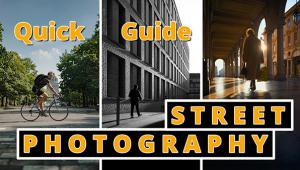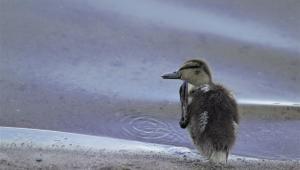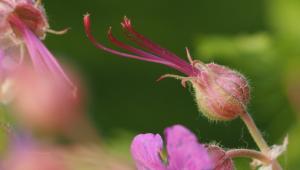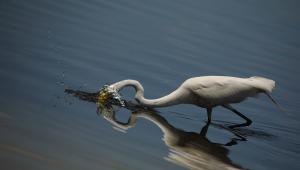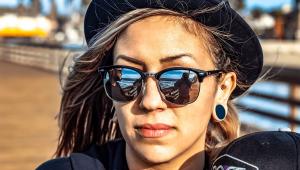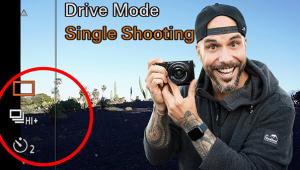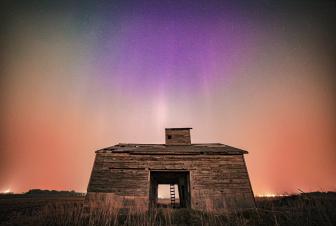Great Photos of Bad Weather
|
We're not suggesting that you head outside during a blizzard or hurricane, but be aware that some great photo opportunities can occur when the weather is less than perfect. Don't get into the habit of taking pictures only when the sun's out—many a great image was taken during a clearing storm, of reflections on city streets after a light rain, or of bolts of lightning cutting through a night sky.
Cloudy skies appear off-white or dull gray in a photograph, so you'd be better off to minimize them or avoid making them part of your composition. Instead, look for subjects that don't include a blanched-out sky, like flower close-ups or portraits of people. Both of these subjects benefit by the soft, even lighting that clouds impart. In a heavy downpour, the rain itself can become your subject. By using the sports mode on your point-and-shoot camera, you can freeze the raindrops; while using the landscape mode will render them as long diagonal streaks. To make the rain stand out, it's best to use a dark background. The same holds true for snow (just make sure to turn your camera's flash off so that snowflakes close to your lens aren't rendered as big white blobs). After a storm, you'll increase your chances of seeing a rainbow by facing away from the sun toward the dark sky. You can often line the rainbow up with an interesting foreground subject to show scale and interest, so scout around for good vantage points. Lightning provides a spectacular light show in the sky and can give you truly dramatic photos. However, your first concern should be to photograph lightning from a sheltered area. Take pictures only from a distance and from a safe location, like inside a building. If you get the opportunity, photograph lightning after dark, when the bright streaks of light provide a stark contrast to the sky. Just as when photographing fireworks, lightning can be unpredictable and it's difficult to know what you'll get on film. Put your camera on a tripod—or brace it against a window sill—and point it in the direction in which most of the lightning bolts appear. If your camera has a "night scene" mode, or offers a long time exposure, this will enable you to capture several bolts of lightning on one frame. Again, you'll want to turn your camera's flash off if you can. Fog and mist are great for producing soft, impressionistic pictures. When you take pictures under these circumstances, be aware that colors will be muted, and shapes become more simple and will lack detail. For this reason, it's a good idea to put the most important subjects close to your camera, such as an interesting barn in a farm scene, or a boat on water with rising mist. The rest of the details will fade into the background. Photographing scenery covered by a mantle of snow can be beautiful, but large expanses of white snow (like sandy beaches) are usually rendered gray in photos. Why? It's because cameras' light meters are designed to read a scene as 18% gray. If you can override your compact camera's meter, try overexposing by one to two f-stops, and shoot lots of pictures to ensure some successful results. On a sunny day, take pictures early in the morning and late in the afternoon. The low sun will rake across the snow, which will reveal more detail and texture than under midday sun. Avoid the old adage of photographing with the sun directly behind you. The light reflected back into your lens from the bright snow will give you a blindingly white mass with no detail. It's very important to protect your camera in any type of inclement weather. A compact point-and-shoot can easily be tucked into a coat pocket or handbag until you're ready to use it. If you're taking pictures when it begins to rain or snow, protect your camera by shooting from under a roof overhang or an umbrella. If you're in an area where you're likely to experience heavy snow or rainfall, use a plastic bag or underwater camera housing to protect your camera (even a plastic shower cap will do). You can also purchase a water-resistant compact camera or a single-use waterproof model. Stay warm, protect your camera, and don't be afraid to shoot pictures in bad weather. Some may be the most dramatic images you're ever taken. |
- Log in or register to post comments















